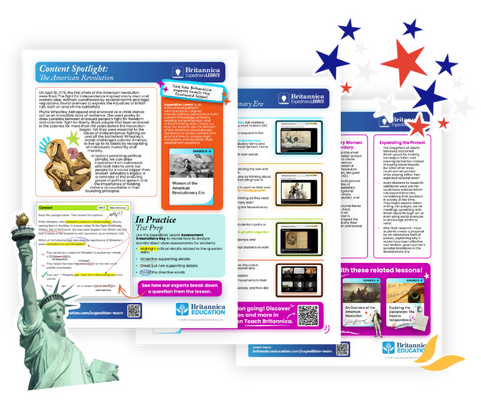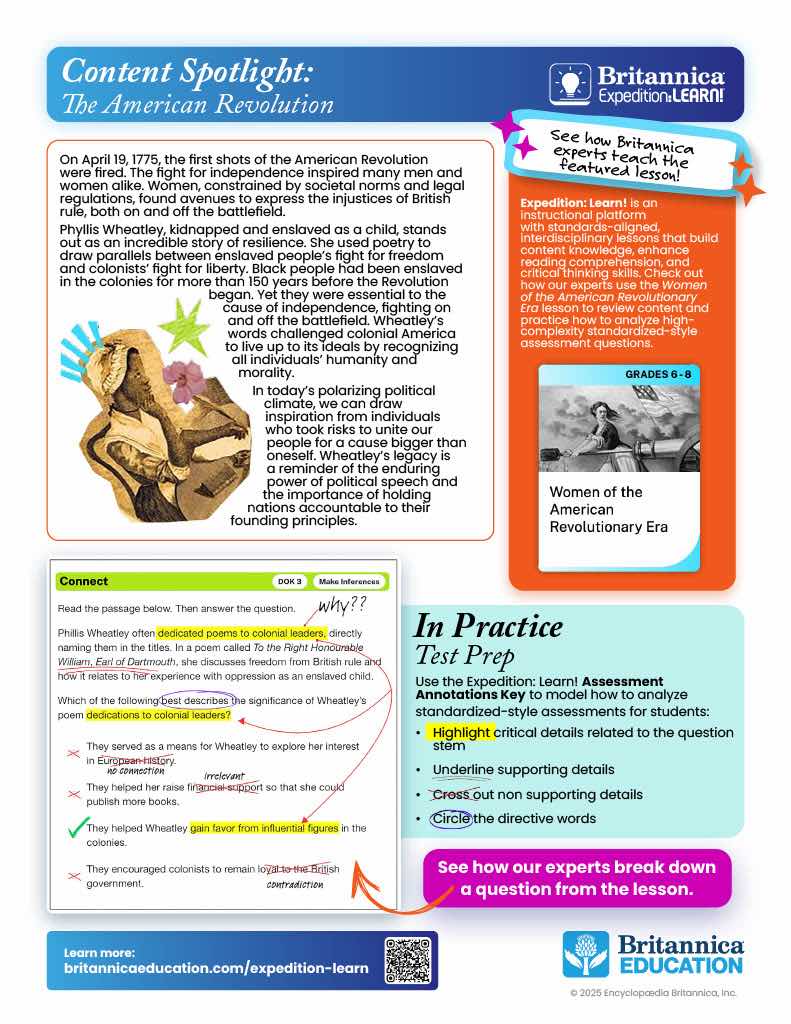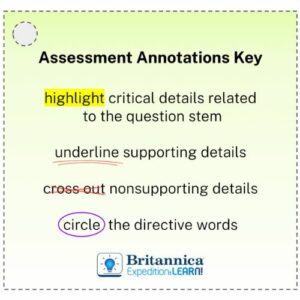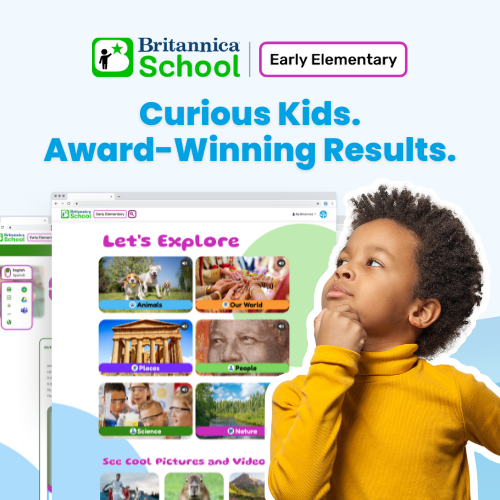

Table Of Contents
Discover how to analyze assessment questions using Expedition: Learn!
Testing season has begun, and now is the perfect time to review standards and topics likely to be covered in standardized assessments.
From US history to civics and government, Britannica Expedition: Learn!’s standards-aligned library of more than 300+ lessons has got you covered!
Whether students need a refresher (or they slept through the lesson the first time) or need some practice with assessment items, Expedition: Learn! has everything students need to master the content and equip them with strategies and tools that they need to succeed during testing season.

Check out how our experts use the Women of the American Revolutionary Era lesson to review content and practice how to analyze high-complexity standardized-style assessment questions.
Help Students Understand Why It Matters
On April 19, 1775, the first shots of the American Revolution were fired. The fight for independence inspired many men and women alike. Women, constrained by societal norms and legal regulations, found avenues to express the injustices of British rule, both on and off the battlefield.
Phyllis Wheatley, kidnapped and enslaved as a child, stands out as an incredible story of resilience. She used poetry to draw parallels between enslaved people’s fight for freedom and colonists’ fight for liberty. Black people had been enslaved in the colonies for more than 150 years before the Revolution began. Yet they were essential to the cause of independence, fighting on and off the battlefield. Wheatley’s words challenged colonial America to live up to its ideals by recognizing all individuals’ humanity and morality.
In today’s polarizing political climate, we can draw inspiration from individuals who took risks to unite our people for a cause bigger than oneself. Wheatley’s legacy is a reminder of the enduring power of political speech and the importance of holding nations accountable to their founding principles.


Annotating High-Complexity Assessment Items
Every Expedition: Learn! lesson has high-cognitive level assessment items designed by experts to reflect what students will see on standardized tests. One strategy that can help students succeed during testing season is annotating assessment items.
Teaching learners to annotate assessment items helps them actively engage with the text and strategically focus on key points. This strategy can help students:
🌟 Remove unnecessary or irrelevant details that distract from the core question.
🌟 Identify clues that lead them to the right answer regardless of their background knowledge.
🌟 Reduce the chance of making careless mistakes.
🌟 Resist the urge to rush by intentionally breaking down the item.
🌟 Identify directive words in the question stem to avoid misinterpretation.
🌟 Organize complex information into manageable parts to support visual thinking.
We’ve designed a handy Expedition: Learn! Assessment Annotations Key that you can print and cut so that every student can have a copy to use during testing season and test prep.
See how our experts use the key to break down a question from the featured lesson!
Expedition: Learn! is grounded in decades of research and evidence-based practice, and lessons can be used for whole-class instruction, small group reteaching, or independent practice. Expedition: Learn! is perfect for test prep because each standards-aligned lesson is designed to build disciplinary literacy skills while fostering content mastery, critical-thinking skills, and real-world application. Help your students prep for testing season! Book a demo of Expedition: Learn!

Expedition: Learn! in the Classroom
Check out other ways to use Women in the American Revolutionary Era with a lesson guide that features engaging activities, thoughtful discussion questions, graphic organizers, and more!

About the Author
Emily Campchero
Social Studies Lead Subject Matter Expert
Emily began her career working in Title I schools, specializing in gifted, MLL, and bilingual education. She has led teams to create content and curriculum at the Positive Psychology Center at the University of Pennsylvania and Teachers College–Columbia University as well as for public school systems such as the New York City and Florida departments of education and the Texas Education Agency. Emily holds a master's degree in Curriculum and Instruction from Teachers College–Columbia University and a bachelor's of science in International Trade and Marketing, with minors in Economics and Latin American Studies, from the Fashion Institute of Technology.











